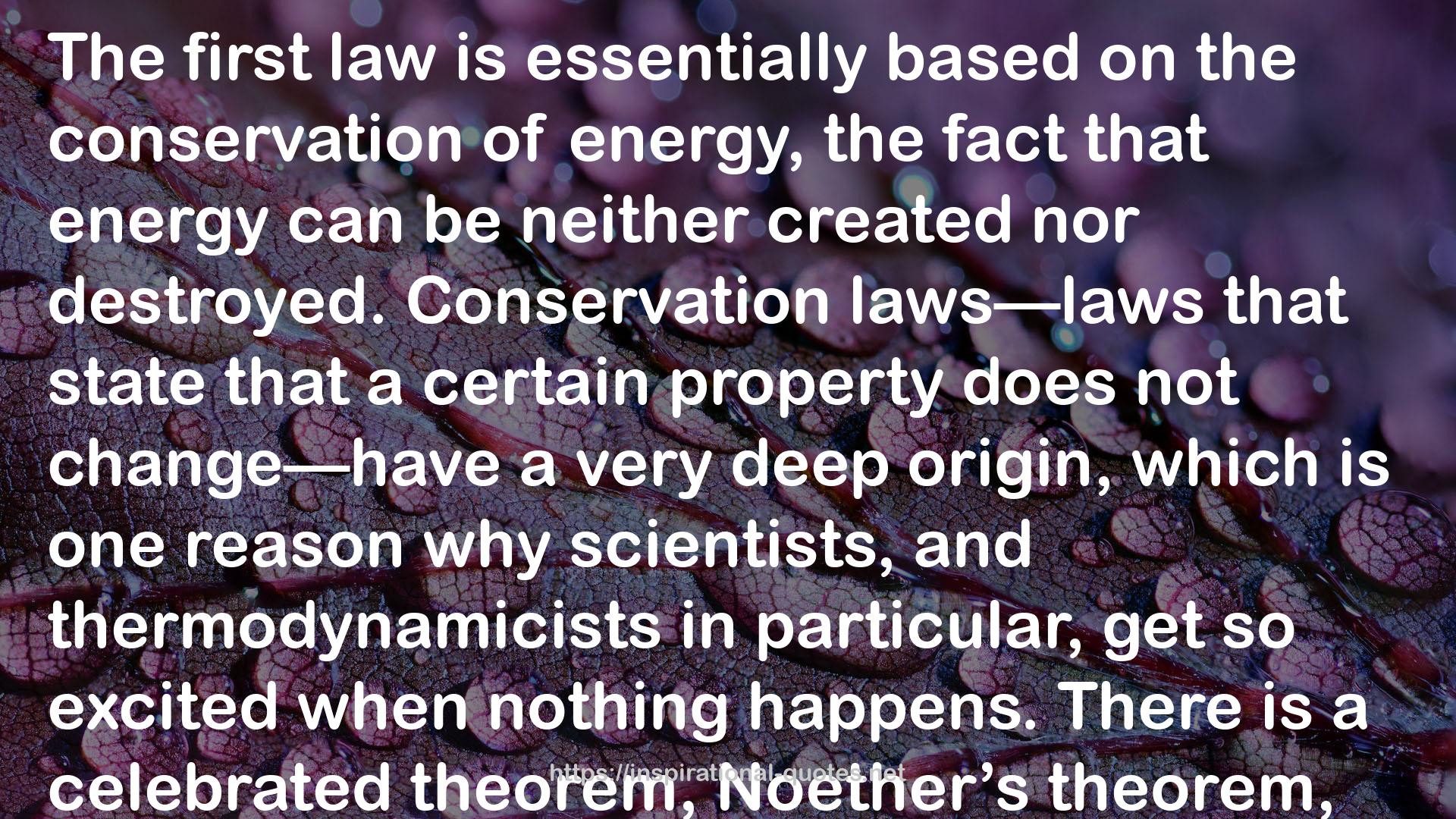" The first law is essentially based on the conservation of energy, the fact that energy can be neither created nor destroyed. Conservation laws—laws that state that a certain property does not change—have a very deep origin, which is one reason why scientists, and thermodynamicists in particular, get so excited when nothing happens. There is a celebrated theorem, Noether’s theorem, proposed by the German mathematician Emmy Noether (1882–1935), which states that to every conservation law there corresponds a symmetry. Thus, conservation laws are based on various aspects of the shape of the universe we inhabit. In the particular case of the conservation of energy, the symmetry is that of the shape of time. Energy is conserved because time is uniform: time flows steadily, it does not bunch up and run faster then spread out and run slowly. Time is a uniformly structured coordinate. If time were to bunch up and spread out, energy would not be conserved. Thus, the first law of thermodynamics is based on a very deep aspect of our universe and the early thermodynamicists were unwittingly probing its shape. "
― Peter Atkins , The Laws of Thermodynamics: A Very Short Introduction
Image for Quotes

Emmy Noether (1882–1935), which states that to every conservation law there corresponds a symmetry. Thus, conservation laws are based on various aspects of the shape of the universe we inhabit. In the particular case of the conservation of energy, the symmetry is that of the shape of time. Energy is conserved because time is uniform: time flows steadily, it does not bunch up and run faster then spread out and run slowly. Time is a uniformly structured coordinate. If time were to bunch up and spread out, energy would not be conserved. Thus, the first law of thermodynamics is based on a very deep aspect of our universe and the early thermodynamicists were unwittingly probing its shape." style="width:100%;margin:20px 0;"/>
 Emmy Noether (1882–1935), which states that to every conservation law there corresponds a symmetry. Thus, conservation laws are based on various aspects of the shape of the universe we inhabit. In the particular case of the conservation of energy, the symmetry is that of the shape of time. Energy is conserved because time is uniform: time flows steadily, it does not bunch up and run faster then spread out and run slowly. Time is a uniformly structured coordinate. If time were to bunch up and spread out, energy would not be conserved. Thus, the first law of thermodynamics is based on a very deep aspect of our universe and the early thermodynamicists were unwittingly probing its shape." style="width:100%;margin:20px 0;"/>
Emmy Noether (1882–1935), which states that to every conservation law there corresponds a symmetry. Thus, conservation laws are based on various aspects of the shape of the universe we inhabit. In the particular case of the conservation of energy, the symmetry is that of the shape of time. Energy is conserved because time is uniform: time flows steadily, it does not bunch up and run faster then spread out and run slowly. Time is a uniformly structured coordinate. If time were to bunch up and spread out, energy would not be conserved. Thus, the first law of thermodynamics is based on a very deep aspect of our universe and the early thermodynamicists were unwittingly probing its shape." style="width:100%;margin:20px 0;"/>